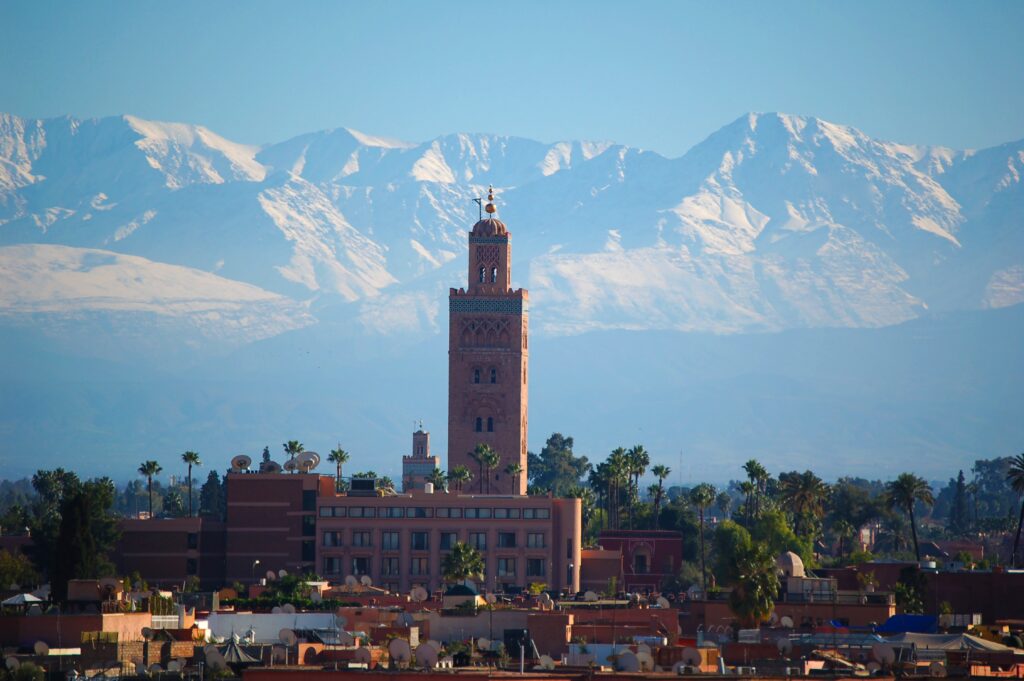
Introduction: Marrakech, a jewel in Morocco’s crown, holds within its ancient walls the echoes of centuries gone by. Designated as a UNESCO World Heritage site, the city stands as a testament to the intricate interweaving of history, culture, and architecture. In this historical exploration, we delve into the rich tapestry of Marrakech’s UNESCO-listed heritage, unraveling the stories that have shaped this mesmerizing destination.
The Origins of Marrakech:
Marrakech’s roots trace back to the 11th century when it was founded by the Almoravid Dynasty. The city quickly flourished into a cultural and commercial hub along the trans-Saharan trade routes. The historic core, the Medina, encapsulates the essence of medieval urban planning, offering a glimpse into the city’s foundational years.
Koutoubia Mosque:
At the heart of Marrakech stands the iconic Koutoubia Mosque, a masterpiece of Almohad architecture and a symbol of the city. Constructed in the 12th century, its towering minaret is visible from various vantage points, guiding both locals and travelers alike. The Koutoubia Mosque is a living testament to the city’s Islamic heritage and the craftsmanship of its builders.
Medersa Ben Youssef:
The Medersa Ben Youssef, a theological college dating back to the 14th century, is another jewel within Marrakech’s UNESCO heritage. Its intricate tilework, carved cedar wood, and serene courtyards speak to the golden age of Moorish architecture. Once a center for Islamic learning, it stands as a poignant reminder of Marrakech’s intellectual and cultural prowess.
Bahia Palace:
Constructed in the late 19th century, the Bahia Palace showcases the opulence of Moroccan architecture during the Saadian period. Its sprawling gardens, intricately decorated rooms, and stunning courtyards transport visitors to an era of grandeur and elegance.
Jemaa el-Fna Square:
The vibrant heartbeat of Marrakech, Jemaa el-Fna Square, is a dynamic UNESCO-listed space that encapsulates the city’s living traditions. By day, it hosts market stalls selling spices, textiles, and crafts, while at night, it transforms into a lively spectacle of storytellers, musicians, and street performers. This bustling square embodies the cultural vitality that earned Marrakech its UNESCO recognition.
Preservation Efforts:
UNESCO’s inscription of Marrakech as a World Heritage site in 1985 was a milestone for the city. It spurred initiatives to preserve and protect its historic treasures. Conservation projects have aimed to maintain the authenticity of the Medina, ensuring that future generations can continue to experience the city’s unique charm.
Culinary Heritage:
Marrakech’s UNESCO heritage extends beyond architecture to its culinary traditions. The city’s bustling souks, filled with the aromas of spices and traditional dishes, are a testament to Morocco’s gastronomic richness. From tagines to pastries, the cuisine of Marrakech is an integral part of its UNESCO-listed cultural heritage.
In conclusion, Marrakech, with its UNESCO World Heritage designation, invites visitors on a timeless journey through the annals of history. The Koutoubia Mosque, Medersa Ben Youssef, Bahia Palace, and Jemaa el-Fna Square collectively narrate the story of a city that has been a cultural crossroads for centuries. As Marrakech continues to preserve its heritage, the echoes of its past reverberate through its streets, inviting all who wander through its UNESCO-listed Medina to be part of its enduring legacy.
